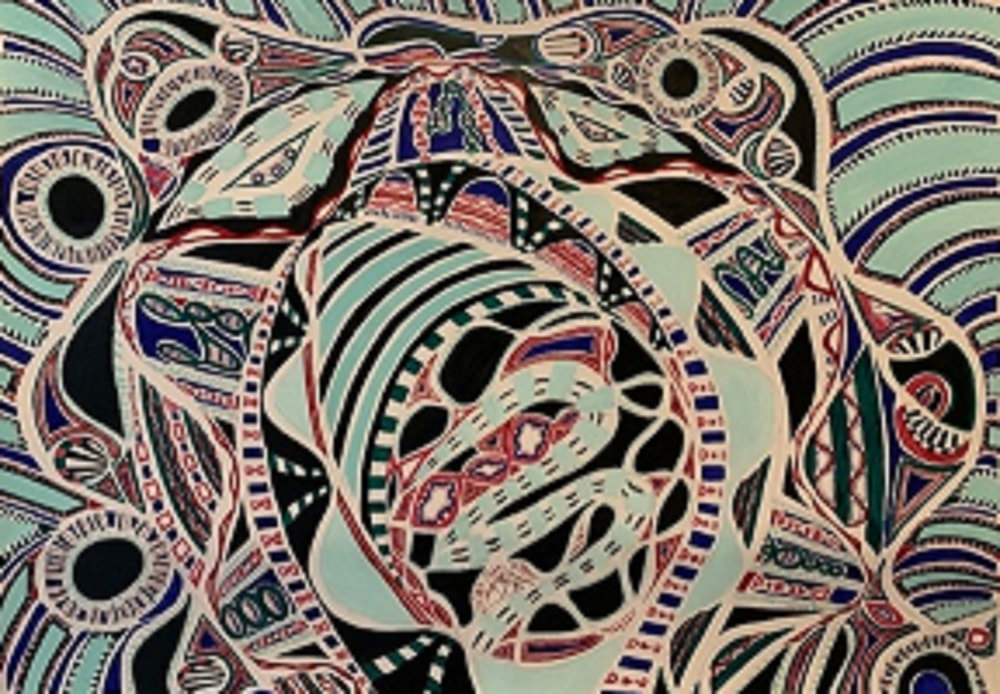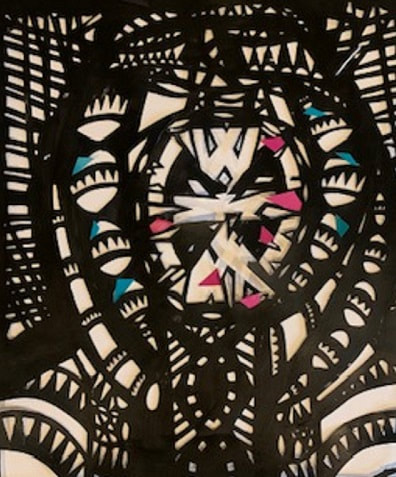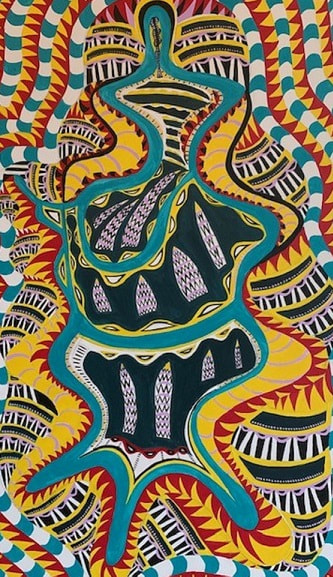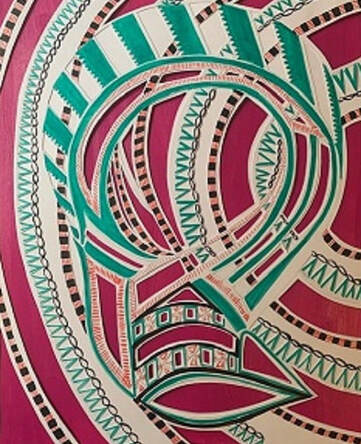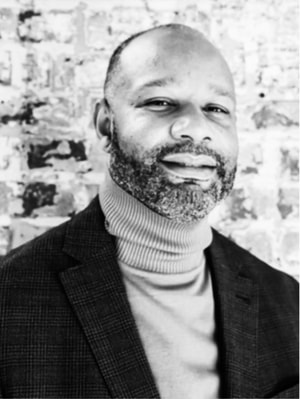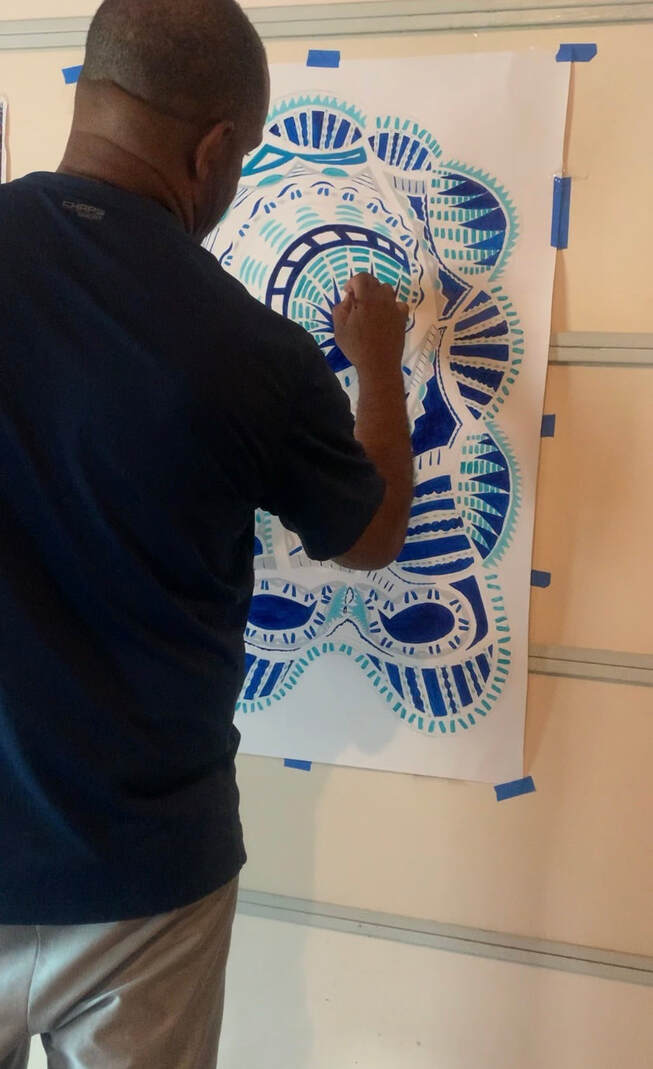Zerric Clinton received his BFA in Art Education from Valdosta State University, an M.A. in Educational Leadership, Valdosta State University, and a PhD in Art Education from Florida State University. Over the past 25 years he has received several award. His awards include 2015 GAEA Secondary Art Educator of the Year, 2004 and 2012 Most Influential Teacher of an Honor Student, Cairo High School, and he was elected the 2017 President of the Georgia Art Education Association. Zerric is currently selected into the NAEA School for Arts Leaders program and will matriculate with the class of 2021. Zerric is currently a part of the Infectious Creativity exhibit at Kennesaw State University. Zerric maintains a studio at the Hood Street Art Center in McDonough, GA and teaches art at Dutchtown High School in Hampton, GA. Zerric serves as the past- president of the Georgia Art Education Association whose mission is to advocate for the highest quality visual arts education and provide for the advancement of knowledge through service, leadership and research. Over the years he has participated in different art shows including: 4th Annual Abstract Project, Spring into Art Exhibit, Valdosta, GA., Mozaik Art Museum, Los Angeles, Creativity Distancing, Corpus Christi, Texas, Artists who Teach, Fayetteville, NC, A Sense of Place, Augusta, GA., Georgia Artists Exhibit, Sandy Springs, GA., Freedom of Abstraction, Brooklyn, NY, 32nd Annual McNeese Art Show, Lake Charles, LA. He presents at state and national conventions. National presentations include: 2016 Harvest for the World: A History of African Americans in Art Education. Brushes with History: Imagination and Innovation in Art Education, Teachers College, Columbia University. New York, NY. , 2015 Breaking BAD: Collaborative Project - the Museum of Tolerance New York, NY Kushner School, 2015 Beyond Colorblind Policy: Designing the Future of Visual Arts New Orleans, LA.
Published on May 25th, 2021. Artist responses collected in months previous.
What hurdles have you overcome this year and how have they affected your art practice?
When the pandemic hit it took me a while to set my space at home so I would be able to create. Working from home has its advantages and it has some challenges. The convenience is nice, but when you have four kids in the house it can be challenging to turn off parent mode and get into a space where you are free to create. For artists there are times when you need that silent space to consider options, go through the sketching process and reach some sort of rhythm. It is easy to become distracted when so many people are in your space. What I have learned is that I have to tune things out. For me I tend to put on my headphones and listen to things that I enjoy and that get me in the rhythm that is necessary for me to be creative. Creativity is an interesting thing that I have to do on a daily basis.
How has your art practice been affected by the pandemic?
Wow. What can you say? This has been the most trying thing that I have been through. My artwork really suffered in the beginning. When my studio was shut down I did not have many art materials at home so I had to make the decision to make a huge investment in more art materials. Trust me this was not in my budget and I thought that things would go back to normal in a few weeks. But, after a month went by things started to get worse and we were scheduled for a shelter in place order I went ahead and ordered a lot of art materials. That was the best situation I could have made under the circumstances. Getting the inspiration to create in the midst of this turmoil. I decided to use my creative ability to respond to the things that were happening. When you have family members that die from this and others that are very ill it is difficult to digest. Fortunately, for me my art is an outlet that I can rely on to be expressive.
What support systems have you put in place to help keep your practice thriving amidst these unforeseeable circumstances?
Staying in contact with fellow artists has been a huge help for me. When artists are able to dialogue and discuss art it provides a level of normalcy. Social media has been a useful way to stay connected for sure. I look forward to seeing what everyone else is doing each day and then text of call them to talk about the direction our work has taken during this unfortunate situation. In terms of accountability this is huge, It allows us to make suggestions and motivate each other. Some may think that artists are self-motivated and in many situations that is probably the case, but when catastrophic events occur artists are effected just like anyone else. This can be very impactful since I create work about things that affect people. I am fortunate to have mentors that help me out in so many different ways. Both of my mentors also create work that centers around social issues. This common ground allows us to go in-depth regarding what matters to us. When we engage in discussions inspiration comes and we gain new perspectives.
What methods do you employ to stay resilient in your art practice? What tips would you recommend to other artists who find staying resilient difficult?
Having a schedule is most important in my opinion. When the school year begins I know that m time is very limited during the day. So, I make sure that I work on sketches, conduct research or develop works of art. What makes this good is that you are working on something that is related to your discipline on a daily basis. It is very easy to become distracted when you are not a full time artist. Even in the summer months when I am not working I still stick to a schedule. I really do wakeup the same time each day and most of the time it is before the alarm clock can even go off. Once you tick to schedule for a while it becomes easier and easier. Discipline, discipline, discipline. Those are the words that I constantly hear from my mentors. They always remind me of their work schedule and also say remember the word work is in artwork for a reason. To be the best artist that I can be I understand how important it is to work on something daily.
What have you learned about yourself as an artist this year?
At the beginning of 2020 I had a variety of art goals that I wanted to accomplish by the end of the year. The first couple of months went very well as I was in contact with several galleries and my work had been accepted into to a couple of shows. When March came I had a meeting scheduled to discuss a solo show opportunity, but the shelter in place order disrupted all the planning. Around May I heard from the art center that everything was closed indefinitely and that they had no idea when even the shows on the calendar would take place so they could not offer me a show at this point. To be blunt, this was a huge disappoint. They have assured me that I will eventually get this opportunity so I will have to remain patient and optimistic. I decided to spend my time this year created as much work as possible. That way when opportunities do arise I will have a multitude of artwork that curators can select from. I must make the best of the situation and continuously prepare for future opportunities.
What hurdles have you overcome this year and how have they affected your art practice?
When the pandemic hit it took me a while to set my space at home so I would be able to create. Working from home has its advantages and it has some challenges. The convenience is nice, but when you have four kids in the house it can be challenging to turn off parent mode and get into a space where you are free to create. For artists there are times when you need that silent space to consider options, go through the sketching process and reach some sort of rhythm. It is easy to become distracted when so many people are in your space. What I have learned is that I have to tune things out. For me I tend to put on my headphones and listen to things that I enjoy and that get me in the rhythm that is necessary for me to be creative. Creativity is an interesting thing that I have to do on a daily basis.
How has your art practice been affected by the pandemic?
Wow. What can you say? This has been the most trying thing that I have been through. My artwork really suffered in the beginning. When my studio was shut down I did not have many art materials at home so I had to make the decision to make a huge investment in more art materials. Trust me this was not in my budget and I thought that things would go back to normal in a few weeks. But, after a month went by things started to get worse and we were scheduled for a shelter in place order I went ahead and ordered a lot of art materials. That was the best situation I could have made under the circumstances. Getting the inspiration to create in the midst of this turmoil. I decided to use my creative ability to respond to the things that were happening. When you have family members that die from this and others that are very ill it is difficult to digest. Fortunately, for me my art is an outlet that I can rely on to be expressive.
What support systems have you put in place to help keep your practice thriving amidst these unforeseeable circumstances?
Staying in contact with fellow artists has been a huge help for me. When artists are able to dialogue and discuss art it provides a level of normalcy. Social media has been a useful way to stay connected for sure. I look forward to seeing what everyone else is doing each day and then text of call them to talk about the direction our work has taken during this unfortunate situation. In terms of accountability this is huge, It allows us to make suggestions and motivate each other. Some may think that artists are self-motivated and in many situations that is probably the case, but when catastrophic events occur artists are effected just like anyone else. This can be very impactful since I create work about things that affect people. I am fortunate to have mentors that help me out in so many different ways. Both of my mentors also create work that centers around social issues. This common ground allows us to go in-depth regarding what matters to us. When we engage in discussions inspiration comes and we gain new perspectives.
What methods do you employ to stay resilient in your art practice? What tips would you recommend to other artists who find staying resilient difficult?
Having a schedule is most important in my opinion. When the school year begins I know that m time is very limited during the day. So, I make sure that I work on sketches, conduct research or develop works of art. What makes this good is that you are working on something that is related to your discipline on a daily basis. It is very easy to become distracted when you are not a full time artist. Even in the summer months when I am not working I still stick to a schedule. I really do wakeup the same time each day and most of the time it is before the alarm clock can even go off. Once you tick to schedule for a while it becomes easier and easier. Discipline, discipline, discipline. Those are the words that I constantly hear from my mentors. They always remind me of their work schedule and also say remember the word work is in artwork for a reason. To be the best artist that I can be I understand how important it is to work on something daily.
What have you learned about yourself as an artist this year?
At the beginning of 2020 I had a variety of art goals that I wanted to accomplish by the end of the year. The first couple of months went very well as I was in contact with several galleries and my work had been accepted into to a couple of shows. When March came I had a meeting scheduled to discuss a solo show opportunity, but the shelter in place order disrupted all the planning. Around May I heard from the art center that everything was closed indefinitely and that they had no idea when even the shows on the calendar would take place so they could not offer me a show at this point. To be blunt, this was a huge disappoint. They have assured me that I will eventually get this opportunity so I will have to remain patient and optimistic. I decided to spend my time this year created as much work as possible. That way when opportunities do arise I will have a multitude of artwork that curators can select from. I must make the best of the situation and continuously prepare for future opportunities.
Find Zerric Clinton on Instagram
